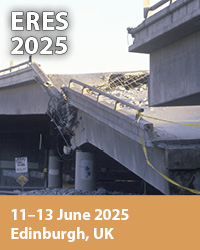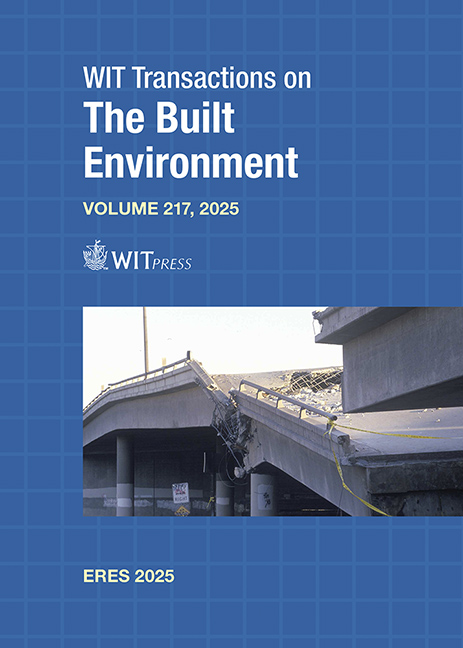ELASTIC LATERAL BUCKLING LOAD OF CONTINUOUS BRACED H-SHAPED BEAMS WITH FORK RESTRAINT UNDER GRADIENT BENDING MOMENTS
Price
Free (open access)
Transaction
Volume
217
Pages
13
Page Range
93 - 105
Published
2025
Paper DOI
10.2495/ERES250091
Copyright
Author(s)
YUI SATO, YUKI YOSHINO, YOSHIHIRO KIMURA
Abstract
In Japan, medium-and low-rise steel structures predominantly consist of moment frames with H-beams connected to box columns. The high torsional rigidity of these columns effectively constrains lateral buckling deformations induced by seismic bending moments in the beams. Previous studies have demonstrated that when H-beams are connected to box columns, flange warping and out-of-plane deformation at the beam ends are restricted, approaching fully fixed support. In this paper, warping fixed support is assumed for the boundary condition of beam ends, and the additional restraint necessary for fully fixed support is defined as fork restraint. Japanese steel structure design guidelines assume pinned beam ends when calculating lateral buckling loads and plastic deformation capacity. However, beam ends typically exhibit fork restraint in practice. Additionally, non-structural members, such as roof folded plates, are attached to the beams and continuously constrain lateral buckling deformations along the beam’s length. This paper examines the effect of boundary conditions on the elastic lateral buckling load of continuously braced H-beams under antisymmetric bending moments. First, the elastic lateral buckling load is calculated for beams with warping and fully fixed supports using the energy method. The resulting equations are then applied to beams with fork restraint, due to the columns’ torsional resistance. A numerical analysis is performed, modelling the H-beam with four-node shell elements and continuous braces represented by horizontal and rotational springs. The proposed equations are validated by comparison with numerical analysis results. The findings show that the elastic lateral buckling load increases with greater horizontal and rotational rigidity of continuous braces and enhanced fork restraint at the beam ends. The load also improves when the bending moment distribution approaches an antisymmetric pattern. The proposed equation provides a practical method to evaluate the lateral buckling load of continuously braced H-beams with fork restraint.
Keywords
lateral buckling, fork restraint, continuous brace, gradient bending moments





